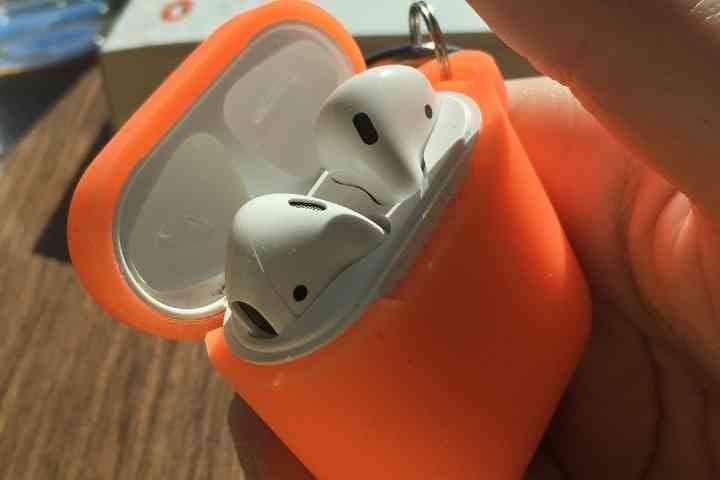Do AirPods Lose Battery When Not in Use?
Few things are as frustrating as picking up a device you know you’d charged earlier only to find its battery dead.
It shouldn’t be too much of a worry when it happens with your AirPods.
Since AirPods are designed to be ready to pop in your ears whenever you’re ready to go wireless on the phone or while listening to music or podcasts, there’s not an off switch.
That may lead you to wonder if your AirPods’ battery power could have drained while they’re not in use.
You don’t want the disappointment of putting in your AirPods to take on a run, only to find that they’re dead as a doornail, so here’s the answer to whether your AirPods lose battery power while not in use.
Do AirPod Batteries Drain When Not in Use?
AirPods lose battery power when they’re sitting idle, but it’s a minimal amount. AirPods lose the least amount of battery power when they’re resting in their case. You can change your settings to turn off your AirPods’ proximity sensors, including automatic ear detection and the double-tap feature, to make your AirPods battery last longer.
To turn off automatic ear detection, go to Settings on your iPhone or iPad, select Bluetooth, and then click the “i” next to AirPods.
From there, you can turn off automatic ear detection.
You can use the same method to turn off the double-tap feature.
How to Make AirPod Batteries Last Longer
To make sure your AirPods are ready when you are, follow these steps to have longer-lasting AirPod batteries.
Store AirPods in Their Case
The best way to keep your AirPods fully charged, as well as corralled and clean, is to keep them in their case when they’re not in use.
Keep AirPods at Room Temperature
High- and low-temperature extremes can damage the batteries of your AirPods.
Use your AirPods at temperatures between 32 degrees and 95 degrees Fahrenheit, and store them at room temperature for best results.
Temperatures below –4 degrees Fahrenheit or above 113 may harm your AirPod batteries.
Use One AirPod at a Time
Listening to one AirPod at a time will extend battery life by 50 percent, plus you can charge the AirPod you aren’t using while the other one is in use.
Another reason you may want to listen with just one AirPod is that you may want to hear other sounds, whether it’s a coworker asking for your help or oncoming traffic when you’re crossing the street.
Turn Off Smart Capabilities
All the cool functions your AirPods feature use battery life.
To extend the life of your AirPods’ batteries, turn off these features by accessing Bluetooth and then AirPods on your iPhone or iPad.
Lower the Volume
AirPods use slightly more power at higher volumes, so turn down their volume to save a little battery power.
Listening at a lower volume is kinder to your hearing, too.
Replace the Batteries
If your AirPod batteries keep failing, it might be a sign that you need to replace them.
The lithium-ion batteries in AirPods have a limited number of cycle charges, usually about 300 to 500.
Every time the battery life drops below 20 percent counts as one cycle, so do the math.
Get a Power Pack
Having a portable charger may make life easier if you’re on the go and need to charge not only your AirPods but your iPhone or iPad.
A portable power pack is a lifesaver for travelers.

Frequently Asked Questions
You may have more battery questions about your AirPods.
These FAQs may give you the answers you need.
Can I charge my AirPods without a case?
Unfortunately, you will need your AirPods’ case to charge them up for them to be ready next time you want to listen to music and podcasts wirelessly or talk on the phone hands-free.
Can I use a different case to charge my AirPods?
Thankfully, yes! If you’ve lost the original case your AirPods came in, you can get a replacement case for them and use that to charge them.
Should I recharge my AirPods after every use?
Getting into the habit of regularly charging your AirPods will not only keep them charged up and ready for use but will extend the life of their batteries.
Should I let my AirPod batteries empty before recharging?
Every time your AirPod battery drops below 20 percent, you’ve used up a charging cycle. Since a lithium-ion battery only has several hundred charging cycles, you don’t want to use them up.
Keep your batteries from reaching 20 percent or less power, and they will last longer.
Do AirPods make a sound when their batteries are low?
As it turns out, AirPods do make a warning sound when their batteries are running low.
This alarm will sound when they reach 10 percent and then again at zero.
If you make charging your AirPods a habit, you might never have to hear this alarm.
Why does one of my AirPods run out of power faster than the other?
You’d think AirPods would die at about the same time, but that’s only true if you use them at the same rate.
To keep one AirPod from dying sooner than the other, rotate their use, using the right, then the left, if you use your AirPods one at a time.
Have AirPods Ready When You Are
AirPods that you can instantly pop into your ears and use undoubtedly make life easier.
If you’ve charged up your AirPods earlier, then even if they lose some battery power overnight, that loss is minimal.
It shouldn’t keep you from enjoying your AirPods.
The best way to make sure your AirPod batteries are ready is to charge your AirPods when they’re not in use, use your AirPods evenly, and try not to let your AirPod batteries get down to 20 percent power or less.